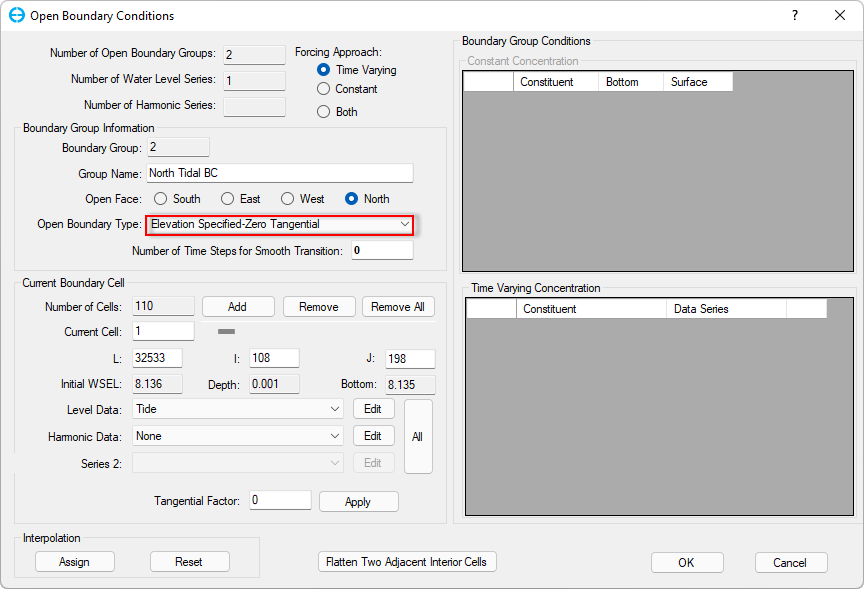...
Elevation Specified is the standard approach for water surface elevations, using a combination of harmonic constituents and time series. With the Radiation Separation boundary condition the incoming wave at an open boundary is separated from the outgoing wave and the incident wave is assumed to be twice the surface elevation required (Zhou, 2014). By default, the outgoing characteristic is left undefined, allowing waves generated interior to the model domain to pass outward across the boundary with no reflection. When using the Elevation Specified option the user should deactivate one cell in the corner of the grid where for each open boundaries when they meet. When using a Radiation Separation boundary then the user must have 2 cells deactivated in the corner for each boundary. This is shown in Figure 2 where four cells are deactivated where the south and east boundaries meet. This is because an open boundary always sets a mask in the E-W direction for the S boundary, likewise, an open boundary sets a mask in the N-S direction for a W boundary. Users should also be aware that if they have rapidly changing bathymetry at the open boundary then it is possible to get mass balance errors.
| Anchor | ||||
|---|---|---|---|---|
|
Figure 1 Boundary Condition Settings – Open Boundary.
...
Users should also be aware that if they have rapidly changing bathymetry at the open boundary, then it is possible to get mass balance errors. Rapidly changing bottom elevation at the open boundary can lead to EFDC becoming unstable. To easily resolve this issue, it is recommended that the first two cells going out in the direction of the open boundary i.e. in the southward direction for the southern open boundary, be at the same elevation.
In EE8.4 a BC option has been which allows the use of an elevation-specified flow but allows for a “free tangential”. Normally an open BC requires two cells at the border. In some models where there are tight boundaries, this can be restrictive. The Elevation Specified-Free Tangential option allows EFDC to only use one cell at the border.
...
